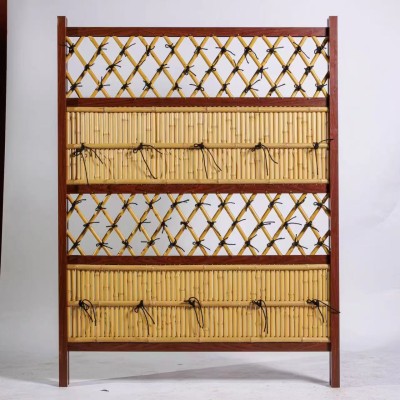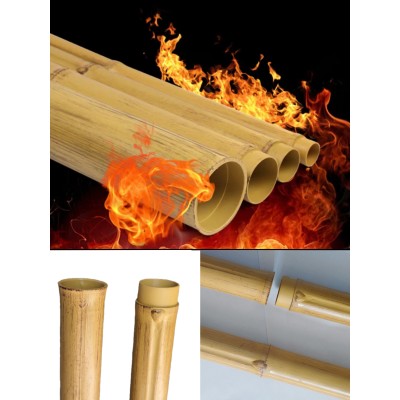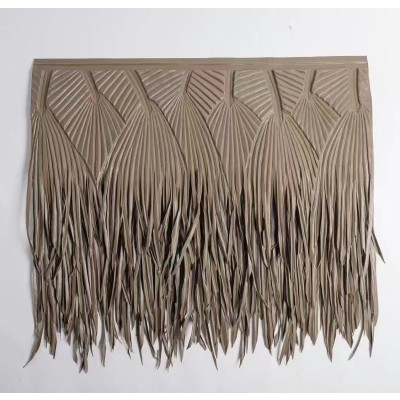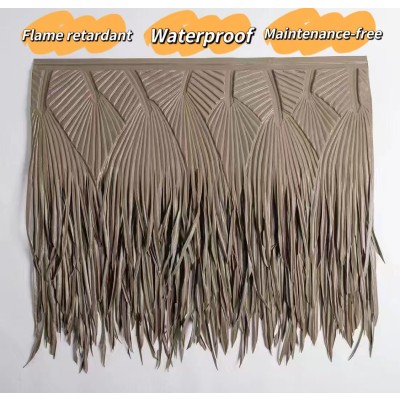On the extinction of giant palm trees in Madagascar and the application of synthetic palm leaves
On the extinction of giant palm trees in Madagascar and the application of synthetic palm leaves
Abstract: This paper focuses on the serious situation of the endangered giant palm tree in Madagascar, and deeply discusses the multiple factors leading to its endangerment, including the change of ecological environment and the influence of human activities. At the same time, the feasibility, technical points and potential impact of adopting synthetic palm leaves as a coping strategy were elaborated, aiming to provide innovative ideas and theoretical support for protecting this precious species, maintaining ecological balance and meeting the needs of related industries.
I. Introduction
Madagascar, a unique island in the western Indian Ocean, is known for its rich and unique biodiversity. Among them, the giant palm tree is a very iconic plant species on the island, carrying a key role in the ecosystem. However, in recent years, its population has declined sharply and is on the brink of extinction, which has aroused widespread concern in the global ecological and botanical circles. In this context, the emergence and development of synthetic palm leaf technology has brought a new opportunity to alleviate many problems caused by the decline of giant palm trees.
2. Ecological characteristics and value of giant palm trees in Madagascar
(1) Morphology and growth habits
Madagascar's giant palm trees, which typically reach tens of meters in height, have strong, straight trunks, broad leaves and distinctive palm splits, adapted to the relatively humid and sunny tropical climate. Its long growth cycle, from seed germination to adult plants often takes decades, which also makes its population resilience is relatively weak.
(2) Ecosystem service functions
At the ecosystem level, giant palm trees provide habitat for many animals, and their fruit is a food source for many species of birds and mammals. After leaf decay and decomposition, it can supplement soil nutrients, promote microbial community reproduction, and maintain material circulation and energy flow of forest ecosystem.
3. Economic and cultural values
For local residents, the wood of palm trees is used in construction and handicraft production, and the leaves are used to weave daily necessities, such as baskets and MATS, playing an indispensable role in traditional cultural inheritance and daily life. At the same time, its unique landscape attracts tourists from all over the world and is an important natural element of Madagascar's tourism industry, bringing considerable foreign exchange earnings to the country.
Analysis of the causes of extinction
(1) Habitat destruction
With population growth, agricultural reclamation and infrastructure expansion, a large number of virgin forests have been cut down, and the suitable living space for giant palm trees has been fragmented and reduced. Illegal logging activities are rampant, and a large number of valuable adult plants are illegally cut down for the timber trade, seriously damaging the population structure.
2. Impacts of climate change
As a result of global warming, rainfall patterns in Madagascar have changed, and drought frequency and intensity have increased. Giant palm trees are sensitive to water in the seedling stage, and drought stress has hindered their normal growth and development. As a result, adult plants have also decreased their reproductive ability and seed yield and quality due to long-term water shortage.
(3) Infestation by diseases and insect pests
Due to the introduction of invasive alien species and the outbreak of local diseases and pests due to ecological imbalance, some new bacteria and pests have exclusively invaded giant palm trees, and the relatively isolated ecosystem on the island makes palm trees lack natural resistance genes, which is difficult to resist the ravaging of diseases and pests, resulting in a large number of plants infected and died.
Iv. Overview of synthetic palm leaf technology
(1) Material research and development
Synthetic palm leaves are mainly based on high polymer materials, and the formula design is carried out by simulating the fiber structure and physical characteristics of natural palm leaves. The researchers screened polymers with high strength, flexibility and weather resistance, and added specific additives to make the synthetic material close to the real palm leaf in texture and color, meeting the visual and partial functional needs.
(2) Manufacturing process
Using advanced injection molding and extrusion molding technology, precise control of blade shape and texture. For example, 3D modeling is used to assist mold manufacturing to replicate complex leaf vein structures; Through the automatic production line, we can ensure the uniform size and specifications of synthetic palm leaves, improve production efficiency and reduce costs to meet the needs of large-scale applications.
Application potential and advantages of synthetic palm leaves
(1) Industrial substitution
In the field of handicrafts production and decoration, synthetic palm leaves can replace natural palm leaves to provide continuous material for the local handicraft industry and avoid the decline of the industry due to the shortage of raw materials. Souvenir shops in tourist attractions can sell special products with synthetic palm leaves as raw materials, which not only perpetuates cultural symbols, but also reduces the dependence on wild palm resources.
(2) Coordination in ecological protection
The promotion of synthetic palm leaves reduces the collection pressure of natural palm trees, so that the residual wild population has a chance to rest and recover naturally. At the same time, reducing deforestation driven by the demand for palm leaves, protecting the integrity of forest ecosystems, is conducive to the survival and reproduction of other endangered species, and promoting positive ecological succession.
6. Challenges and coping strategies
(1) Social cognition and acceptance
Some local residents are bound by traditional concepts and have doubts about synthetic materials, worrying that they cannot inherit the essence of culture and resist the use of them. It is necessary to strengthen the popularization of science and technology, demonstrate the quality and environmental benefits of synthetic palm leaves, organize craftsmen to participate in the training of new materials, experience the convenience of processing, and improve acceptance.
(2) Demand for technological optimization
At present, there is still room for improvement in the texture fidelity and biodegradability of synthetic palm leaves. The research team should continue to invest in research and development, explore new degradable materials, improve the manufacturing process, so that synthetic palm leaves can decompose naturally after waste, reduce the environmental burden, and further fit the concept of eco-friendly development.
Vii. Conclusion
The endangered plight of Madagascar's giant palm trees is a reminder of the global urgency of biodiversity conservation, and synthetic palm leaf technology offers an innovative solution to this crisis. Through in-depth understanding of the ecological value of palm trees, accurate analysis of endangered roots, reasonable development and promotion of synthetic palm leaf applications, it is expected to find a balance between protecting rare species, inheriting regional culture, and promoting sustainable economic development. In the future, all parties need to work together to overcome technical and social barriers, so that synthetic palm leaves can help Madagascar's ecological protection and development to take a new journey



